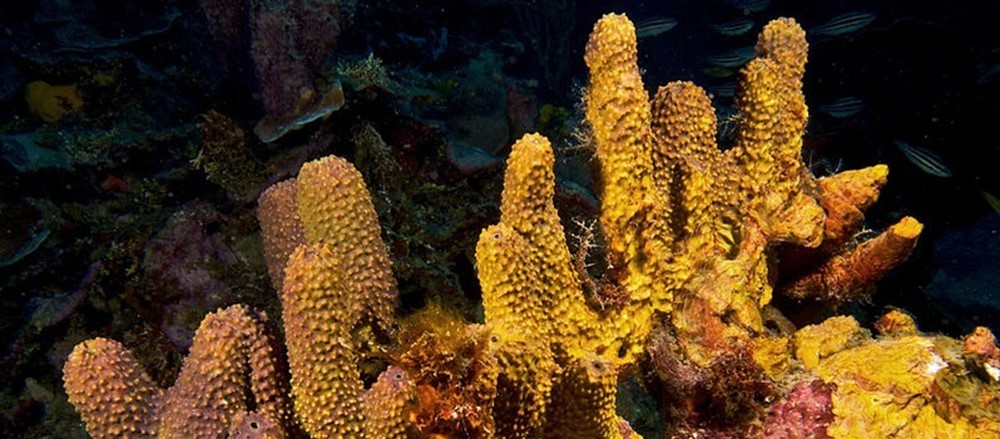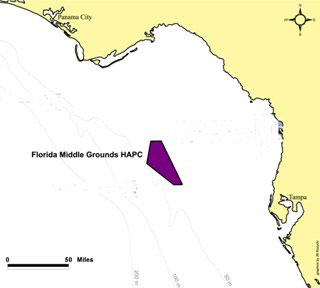
The Florida Middle Grounds: Habitat Area of Particular Concern
Introduction
The Florida Middle Grounds is a unique high relief (> 2 m) hardbottom area off the West Florida Shelf in the northeastern Gulf of Mexico that represents the northernmost extent of mid-shelf octocoral communities in North America (Figure 1). It is a relict coral-reef complex that has morphological similarities to modern patch-reefs, and a faunal assemblage that includes both Caribbean and Carolinian components. The faunal assemblage is distinctly tropical, with a stony coral-gorgonian-sponge dominated community that probably persists because of recruitment of largely Caribbean species transported by northward intrusions of the Loop Current.
The unique features of the Florida Middle Grounds have not gone unnoticed. Roughly 348 NM2 of this hardbottom region 150 km south of the panhandle coast and 160 km northwest of Tampa Bay between 28° 10' and 28° 45' N and 084°00' and 084°25' W is considered a habitat area of particular concern (HAPC) by the Gulf of Mexico Fishery Management Council.

The boundaries of the HAPC capture the primary high-relief and live bottom features of the area. As with other unique marine habitats (including Pulley Ridge), fishers were the first to discover the Middle Grounds because it was once an important Red Snapper (Lutjanus campechanus) fishing ground from as early as the 1880s. It is still important today, but for other species.
Our studies represent a snapshot of the biotic communities, which we compared with data from far more extensive studies conducted in the 1970s by Dr. Thomas S. Hopkins, University of Alabama. While we found no indications of coral die-off or disease, there was an obvious paucity of economically important fish species which we attribute to intensive fishing. The Florida Middle Grounds should be monitored at least ever ten years to assess the potential effects of global warming, coastal development, offshore oil and gas exploration, and ocean dumping--all of which can have profound influences even in remote areas and affect the quality of the associated biotic communities.
To read our full report on the Florida Middle Grounds, from a study conducted for the NOAA Coral Reef Program, go to:http://www.gulfcouncil.org/Beta/GMFMCWeb/downloads/Coral Final Report Florida Middle Grounds - FSU 2002.pdf

